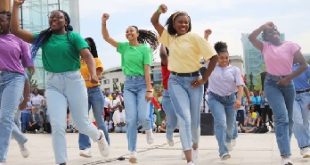Gender is a multifaceted construct with a diverse range of identities and expressions. It’s no longer binary, yet for centuries it has been limited to categories of male-female along with recent developments to another category “other”.
As a society we are not just developing, we are evolving into a better, tech-driven and inclusive world. With this, there is a growing demand, exposure and awareness for inclusive language that acknowledges the existence of the identity. But why is this important? Why is there a growing uproar of gender-neutral or preferred pronouns? How come after name we put our preferred pronouns from dating apps to email signatures?
Gender-neutral or preferred pronouns challenge the restrictive gender norms that have been existing and create a more inclusive society. Kalki Subramaniam, a transgender rights activist, who notes that “by using gender-neutral pronouns, we can validate the existence of non-binary individuals and empower them to express themselves fully.”
Fairly recently, the usage of gender-neutral pronouns were limited to describing others, such as mixed groups or individuals whose gender was uncertain. However, today the situation has changed with people using gender-neutral or preferred pronouns to describe themselves.
The English language describes he/him and she/her as the two pronouns. It was recently that Merriam-Webster acknowledged ‘they’ as a pronoun for “singles whose gender identity is nonbinary” (Merriam-Webster, 2019). Later in the UK and USA, many celebrities spoke openly about being nonbinary like Sam Smith and Indya Moore.
Impact of Using Gender-Neutral or Preferred Pronouns
Using gender-neutral or preferred pronouns is not just about being politically correct; it is about respecting identity and somebody’s well being. Gender-neutral or preferred pronouns refer to gender affirmation which is when a person receives social recognition for their gender identity and expression.
Language is a powerful tool that constructs and sustains our beliefs and perceptions related to gender identities and roles (Tavits & Pérez, 2019). A controlled experiment in Sweden done to establish the improvement in tolerance of LGBTQ+ communities concluded that use of gender neutral or preferred pronouns reduces biases that favour one gender over the other.
Challenges and Barriers in India
Despite the positive developments, the Indian government in 2019 recognised the rights of transgender individuals and passed a law allowing them to legally change their gender without undergoing surgery.
It is anyways a difficult change to come out as non-binary anywhere in the world but in India the process is even more traumatizing and can trigger damages to mental health. The lack of awareness and understanding of non-binary identities is the major barrier in India.
Moreover, sometimes the discrimination manifests within the LGBTQIA+ community, individuals are judged and ranked based on their level of physical transition. Consequently, obtaining a complete transition towards a binary trans identity becomes an ultimate objective.
The Indian government is constantly working towards inclusivity of non-binary genders bringing in laws and amendments that allow gender inclusivity in healthcare, education, employment and other societal areas.
Education can empower change. One such initiative taken by the government was that NCERT published a guide called “Inclusion of Transgender Children in School Education: Concerns and Roadmap” with the aim of assisting educators in embracing all gender identities within the school environment.
The awareness barrier is slowly fading with cultural shifts in the art and fashion realm significantly promoting inclusiveness of all gender clothing lines, models and trends. Business of Fashion in collaboration with Mckinsey company released an insight that half of gen-Z bought clothes in 2022 outside their gender identity (BoF & Mckinsey , 2022).
Are our educators, journalists, people in authoritative power positions and students truly aware of gender-sensitive language?
References
Merriam-Webster. (2019, September 17). The nonbinary pronoun “they” has been added to the dictionary. https://t.co/tadl1vdfb0. Twitter. https://twitter.com/MerriamWebster/status/1173982154654658561?s=20
Tavits, M., & Pérez, E. O. (2019). Language influences mass opinion toward gender and LGBT equality. Proceedings of the National Academy of Sciences, 116(34), 16781–16786. https://doi.org/10.1073/pnas.1908156116
Team, B., & Company, M. &. (2022, December 16). The year ahead: Gender-fluid fashion hits the high street. The Business of Fashion. https://www.businessoffashion.com/articles/retail/the-state-of-fashion-2023-report-gender-neutral-fluid-fashion-gen-z-consumers/
By:
Ms. Cherish Mundhra and Dr. Garima Rajan
Department of Psychological Sciences,
FLAME University, Pune
 Newspatrolling.com News cum Content Syndication Portal Online
Newspatrolling.com News cum Content Syndication Portal Online







